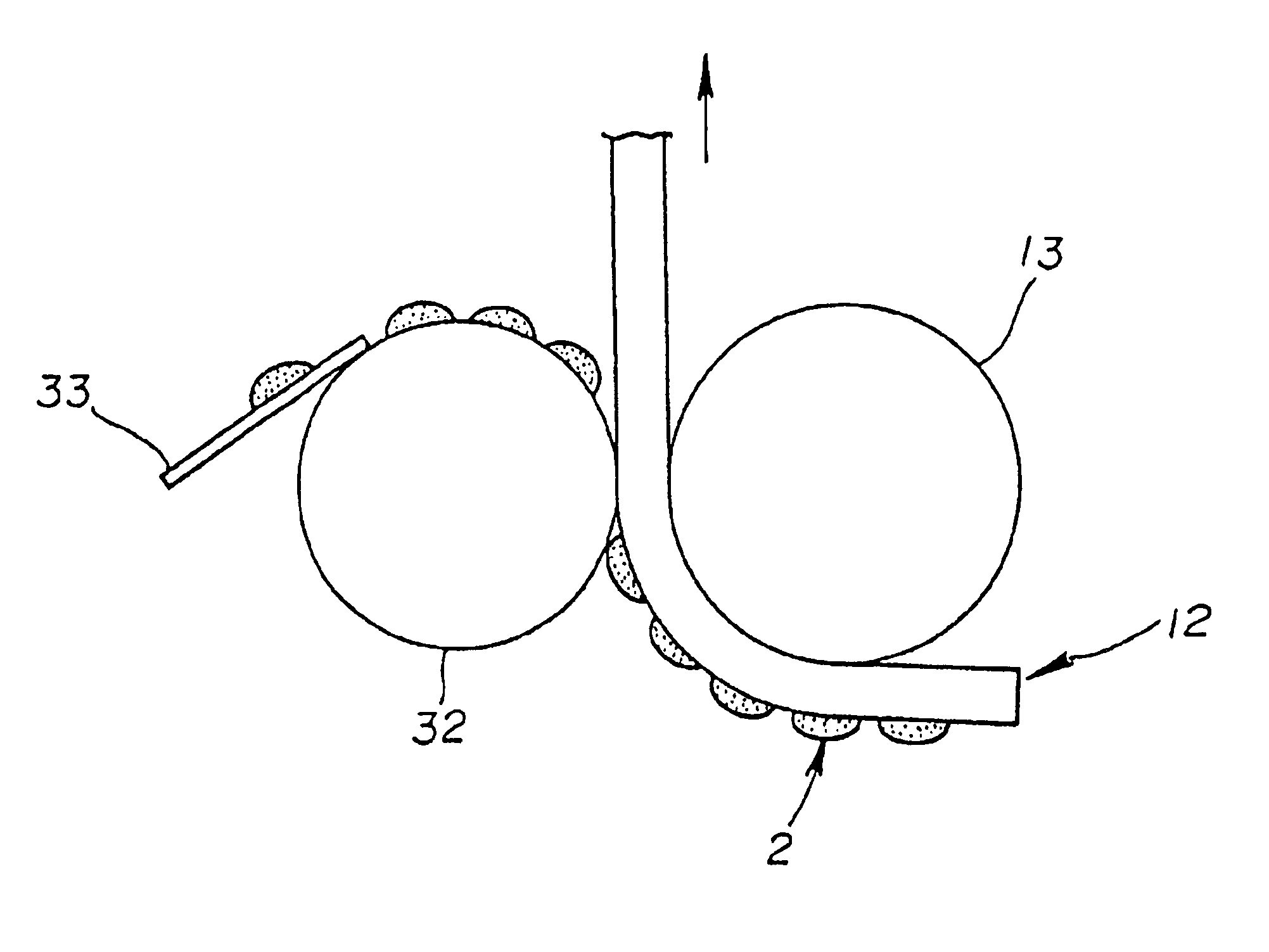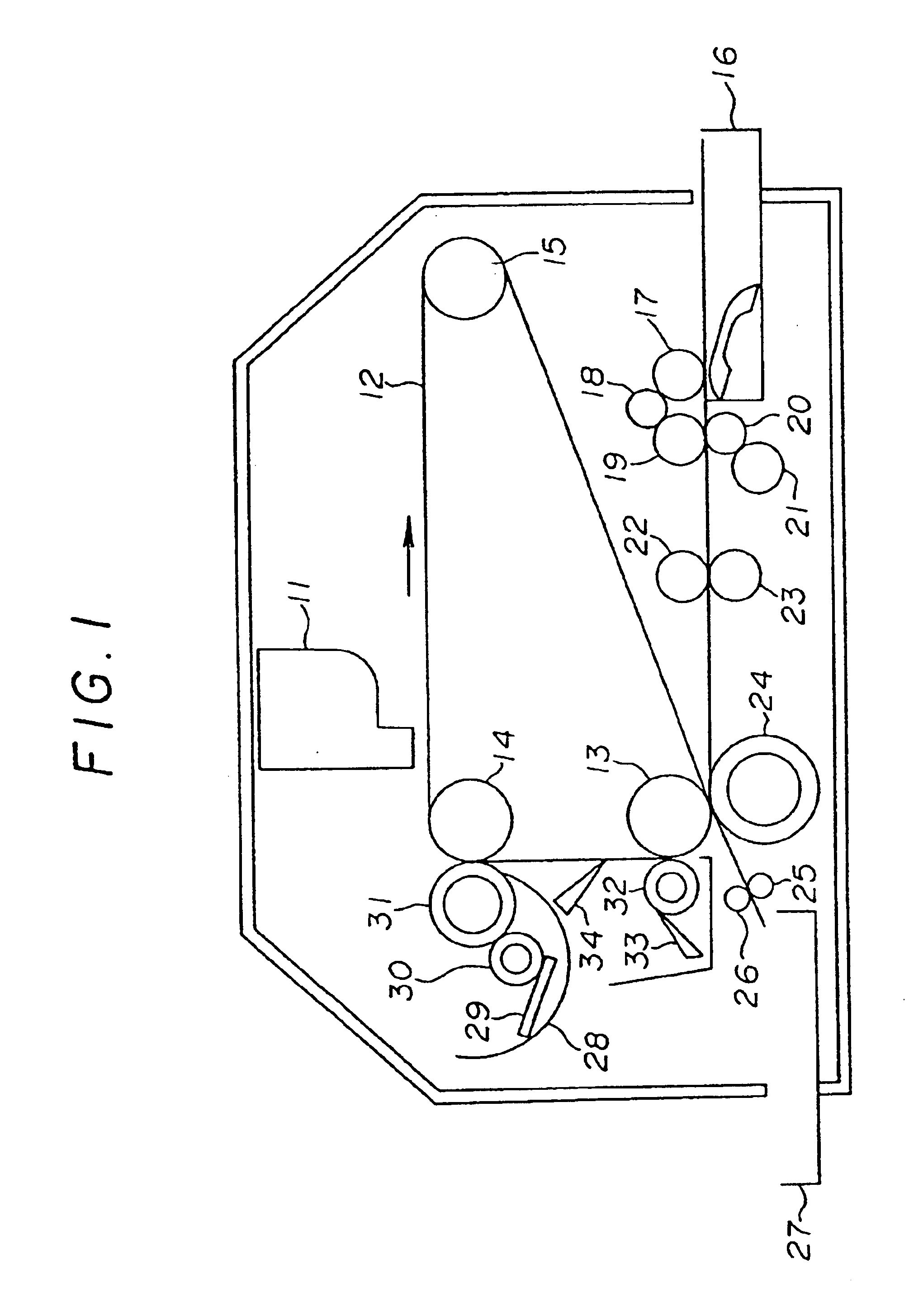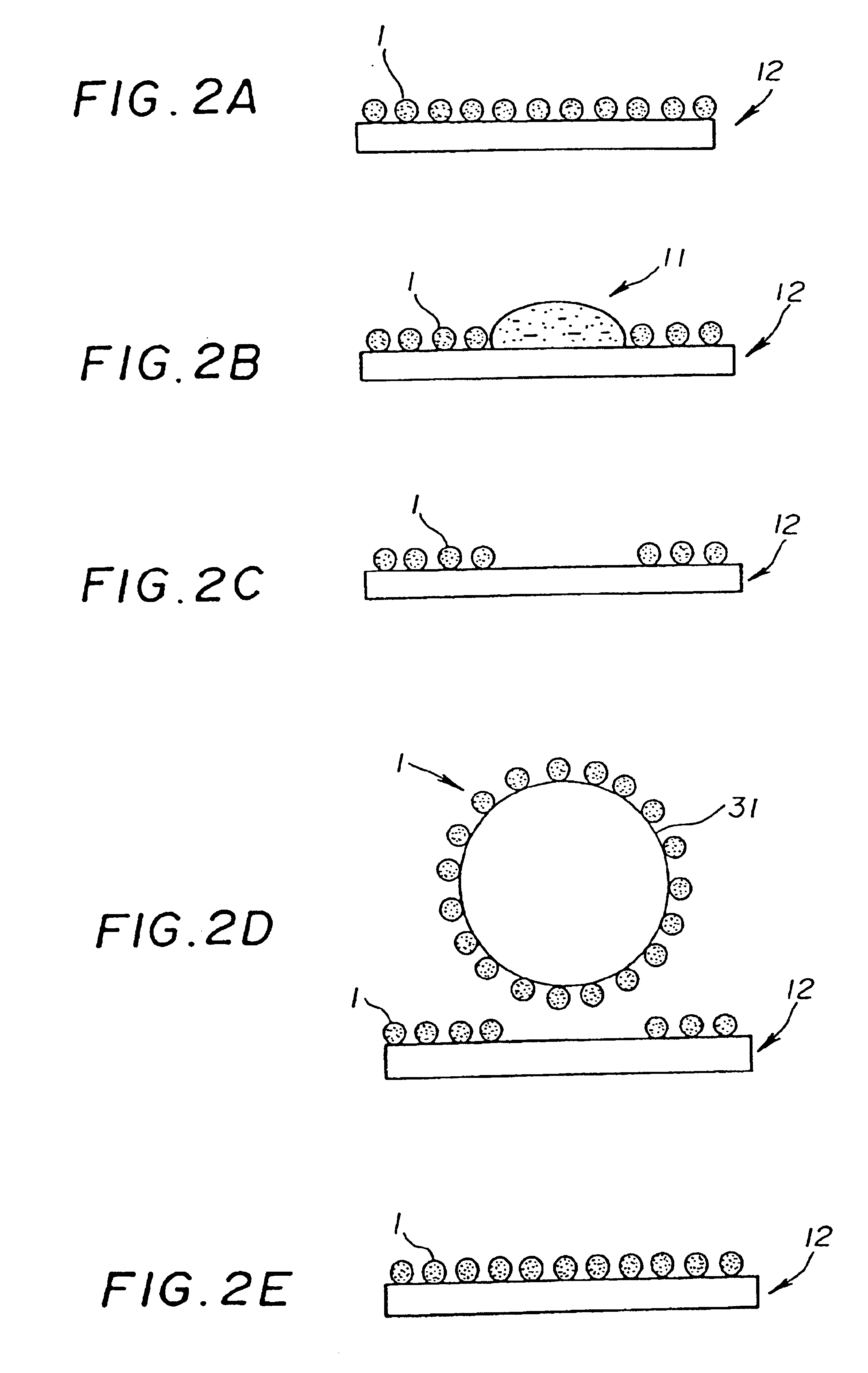Recording method and apparatus with an intermediate transfer medium based on transfer-type recording mechanism
a recording mechanism and transfer medium technology, applied in the direction of ink transfer from master sheet, duplication/marking method, printing, etc., can solve the problems of inaccurate image, deterioration of printing resolution, degraded printed image which is not dried fully, etc., to achieve excellent sharpness, light resistance, and high quality
- Summary
- Abstract
- Description
- Claims
- Application Information
AI Technical Summary
Benefits of technology
Problems solved by technology
Method used
Image
Examples
example 1
The experimental conditions were as follows:
Liquid Recording Device:
An ink-jet printer based on an intermediate transfer mechanism, having a recording head for projecting a liquid in response to an image signal, was used in this experiment. Recording Medium: Wood-free paper (Ricoh PPC paper).
Intermediate Transfer Element:
There was used a mixture of poly(acrylic acid)(Hitachi Chemical, this material will be hereinafter abbreviated to PAA) which has water-absorbing ability as a thickener member and SUMISOPU 90(Sumitomo Chemical) as the ultraviolet stabilizer.
Method for Forming an Image to the Recording Medium:
As is shown in FIG. 1, the above ITE including the above mixture was coated on the ITM which is a water-repellent member. By using the liquid recording device, images were produced on the wood-free paper, comparing with images printed by means of a conventional method which does not use an intermediate transfer-type recording mechanism.
Evaluation of Light Resistance:
An optical de...
example 2
Liquid Recording Device:
The same device as EXAMPLE 1 was used.
Recording Medium: Wood-free paper (Ricoh PPC paper).
Intermediate Transfer Element:
A mixture of PAA and 1 wt % of the ultraviolet stabilizer, DIC-TBS (Dainippon Ink Chemicals), relative to PAA, was used.
Method for Forming an Image to the Recording Medium:
As is shown in FIG. 1, the above ITE including the above mixture was coated on the ITM which is a silicone rubber. By using the same liquid recording device as EXAMPLE 1, images were produced on the wood-free paper.
Evaluation of Light Resistance:
Evaluation was carried out in the same way as EXAMPLE 1.
Results:
In comparison with images produced by the ink jet printing based on the conventional method, good images having water resistance were formed while eliminating ink liquid blurring and liquid penetration problems. After irradiation as explained in EXAMPLE 1, a residual OD value of the images transferred from the ITE containing the ultraviolet stabilizer was more than abo...
example 3
Liquid Recording Device:
The same device as EXAMPLE 1 was used.
Recording Medium: Wood-free paper (Ricoh PPC paper).
Intermediate Transfer Element:
A mixture of PAA and 1 wt % of the ultraviolet stabilizer, cerium oxide (Nidoraru (Taki Chemicals)), relative to PAA, was used.
Method for Forming an Image to the Recording Medium:
As is shown in FIG. 1, the above ITE including the above mixture was coated on the ITM which is a silicone rubber. By using the same liquid recording device as EXAMPLE 1, images were produced on the wood-free paper.
Evaluation of Light Resistance:
Evaluation was carried out in the same way as EXAMPLE 1.
Results:
In comparison with images produced by the ink jet printing based on the conventional method, good images with water resistance were formed while eliminating ink liquid blur and liquid penetration problems. After irradiation, a residual OD value of the printed images transferred from the ITE containing the ultraviolet stabilizer is more than about 85% which is hi...
PUM
| Property | Measurement | Unit |
|---|---|---|
| Percent by mass | aaaaa | aaaaa |
| Fraction | aaaaa | aaaaa |
| Weight | aaaaa | aaaaa |
Abstract
Description
Claims
Application Information
 Login to View More
Login to View More - R&D
- Intellectual Property
- Life Sciences
- Materials
- Tech Scout
- Unparalleled Data Quality
- Higher Quality Content
- 60% Fewer Hallucinations
Browse by: Latest US Patents, China's latest patents, Technical Efficacy Thesaurus, Application Domain, Technology Topic, Popular Technical Reports.
© 2025 PatSnap. All rights reserved.Legal|Privacy policy|Modern Slavery Act Transparency Statement|Sitemap|About US| Contact US: help@patsnap.com



